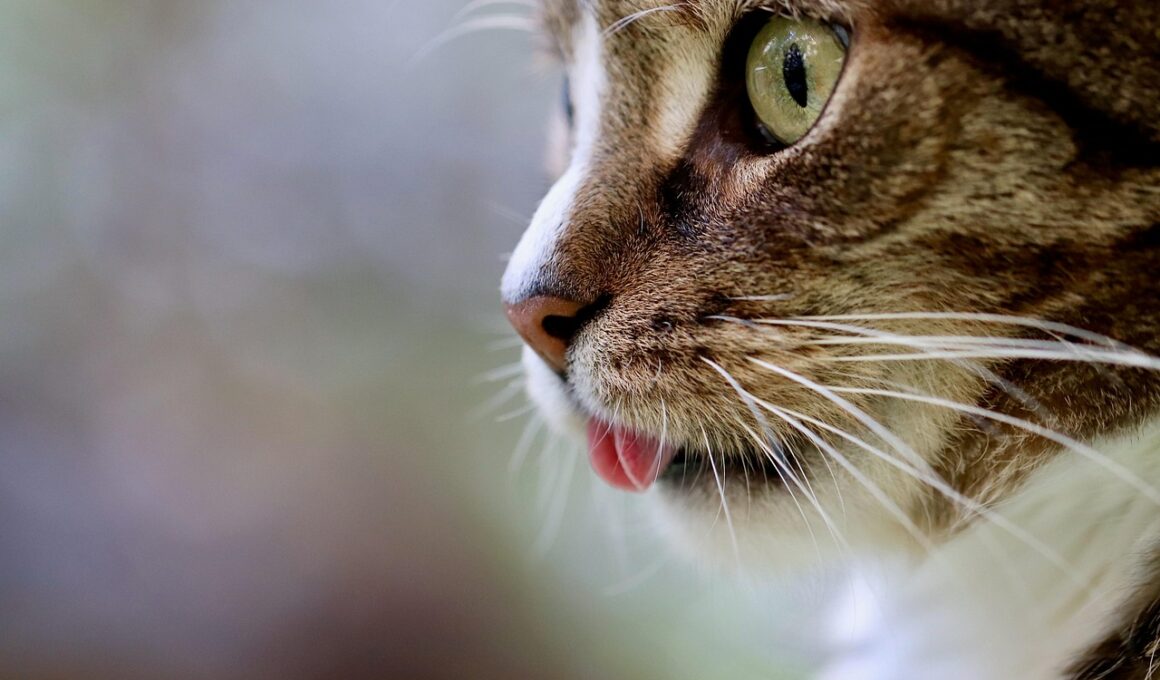The Impact of Breed on Cat Insurance Policies: Comparing Costs and Coverage
When considering cat insurance, the breed of your feline friend plays a significant role in shaping insurance policies. Various breeds have unique health predispositions, which influence the cost of insuring them. For instance, Persian and Burmese cats might require higher premiums due to breed-specific issues like respiratory problems and kidney diseases. In contrast, domestic shorthairs often face fewer prevalent breed-specific issues, resulting in lower insurance rates. Furthermore, insurers examine breed history and associated claims when determining premiums. This evaluation ensures a fair yet precise matching of costs to expected risks. It’s not only about the breed but also the projected healthcare expenses, which can fluctuate. Pet owners should compare policies across various providers to identify the best value for their specific breed. Websites that allow policy comparison can be invaluable, helping owners understand factors that impact costs. Understanding the intricacies of breed-related insurance can lead to better financial planning. By being informed, cat owners can tailor their approach to how they protect their beloved companions through insurance.
Understanding Common Cat Health Issues
Different cat breeds exhibit distinct health issues, significantly affecting insurance premium calculations. Ragdolls are known for their susceptibility to hypertrophic cardiomyopathy, a heart condition, thereby resulting in increased insurance rates. Similarly, Maine Coons often require additional coverage for muscular diseases, elevating their insurance costs. On the flip side, breeds like the Sphynx may not face prevalent health challenges but might attract high premiums due to their unique care needs. Consequently, understanding these breed-specific conditions is imperative for policymakers. Owners must assess these attributes when seeking the right insurance coverage. Additionally, many insurers provide breed classification in their terms, helping cat parents better navigate their coverage options. Awareness of these health issues can also enable owners to secure more appropriate and potentially cost-saving policies. By comparing different policies available online, cat owners can find insurers who may specialize in the coverage needed for their breed. Regular consultations with veterinarians about the specific needs of your breed can also aid in securing comprehensive insurance that encompasses both regular and emergency healthcare requirements.
Cat insurance policies vary significantly, not just in terms of cost but also in the coverage provided. Many insurers offer plans that include varying degrees of preventive care, accident cover, and treatment for illnesses. When comparing policies, factors such as annual limits, deductibles, and reimbursement percentages must be prioritized. For example, some insurers may offer a low premium for a policy that only covers a portion of veterinary bills, leading to potentially overwhelming out-of-pocket costs. Similarly, policies with higher deductibles can seem appealing but may lead to greater financial strain in emergencies. Paying attention to these details is essential for informed decisions. Owners should ask the right questions while carefully evaluating what is included in the policy. To make the most of their insurance, it is advisable to read reviews of different providers. Those who have experience with specific insurers may shed light on their claims processes and overall satisfaction. By arming themselves with knowledge, pet owners can select the most suitable cat insurance policy, enhancing both protection and peace of mind.
Comparative Analysis of Coverage Plans
To effectively compare cat insurance policies, it’s imperative to closely analyze the nature of coverage each plan offers. Some policies may emphasize emergency care, whereas others integrate holistic or preventative treatments into their offerings, influencing annual costs. Nevertheless, many cat owners are likely to prioritize coverage that encompasses a broad array of medical conditions, permitting them to seek varied treatments without facing high financial barriers. Being proactive is key, as some coverage lacks provisions for older cats or those with pre-existing conditions. Owners should thus conduct thorough research ahead of time to understand what makes a policy inclusive or restrictive. This deep dive into policy specifics will ultimately empower pet owners to make well-informed choices that resonate with their cats’ unique health profiles. Additionally, many comparison websites will help break down complex insurance jargon, ensuring that owners grasp essential details without confusion. Ultimately, a thorough comparison of these critical elements lays the groundwork for selecting a policy that delivers the best possible coverage for their cats.
Another crucial aspect to consider while comparing cat insurance policies is the provider’s customer service quality. Responses to queries, claim handling speed, and the overall willingness of staff to assist can make a significant difference in the user experience. Excellent customer service can enhance the entire insurance experience, especially during stressful times such as claiming processes amid a pet’s health crisis. Look for insurers with positive reviews highlighting reliable and supportive customer service teams. A provider with accessible, flexible communication channels can alleviate the stress during emergencies. Additionally, policies that offer user-friendly mobile apps or online portals to manage claims can save valuable time for pet owners. Pet owners are encouraged to investigate these aspects while researching potential policies. To further enhance understanding, joining online forums or social media groups dedicated to cat care can provide insightful feedback regarding various insurance providers. Gathering information from other pet owners lends first-hand insights, ultimately leading to smarter choices regarding coverage and provider reliability.
Financial Considerations for Cat Owners
Financial planning is crucial when dealing with pet insurance policies, particularly for higher-risk breeds. Owners must be aware that while insurance can prevent heavy medical expenses, maintaining premiums annually can represent a corner of their budget. Setting aside a specific percentage of monthly income for premiums is advisable. Seeking quotes from various insurers allows for discovering pricing discrepancies based on breed-specific factors. Additionally, if you find a policy that suits your requirements but appears too costly, consider modifying deductible structures or exploring lower-cost coverage options. Understanding the balance of risk and reward in insurance can help owners feel equipped to make sound financial decisions. Furthermore, using tools like insurance calculators can provide insights into long-term cost implications. Insightful planning contributes to overall household budget stability, helping owners avoid surprises amidst uncertainty regarding future healthcare expenses. Creating a rallying point for discussions with friends or other cat owners can further enhance your financial strategy. By collectively sharing experiences and lessons learned, discerning new insights about managing pet insurance becomes an engaging communal effort.
Beyond immediate costs, it’s essential to remember that specific health issues are more prevalent in certain breeds, potentially influencing long-term healthcare costs. For instance, breeds like Siamese may require ongoing treatments for common respiratory issues, leading owners to cash out additional funds over time. Insurers may provide specific cost projections based on breed health assessments; understanding this can guide you toward comprehensive insurance strategies that offset potential expenses. Owners should invest their time understanding their chosen breed’s predispositions, aligning them with suitable insurance policies. Some policies may even offer added coverage plans that include alternative treatments, a growing area of interest in feline healthcare. Seeking out veterinary professionals who can provide insights into both immediate and future care needs can also contribute to making informed decisions regarding insurance policies. Ultimately, weighing the financial implications of health issues against the premiums can lead to enhanced preparedness. Building strong relationships with veterinarians opens doors to valuable advice and recommendations about securing the best insurance coverage tailored to breed-specific health risks.
While cat insurance is fundamental for ensuring proper care, selecting the ideal policy requires diligence. The unfortunate reality is that misunderstandings about breed-specific issues can perpetuate inconsistencies in premiums and coverage selections. Insurers often assess risk based on collected data, granting insight into the long-term value of protecting your pet appropriately. To mitigate uncertainty, ensure that you are aligning your needs with the available options in the market. Engaging with various resources including pet communities and expert opinions assists in substantiating decision-making processes, culminating in securing ideal outcomes for both owners and their pets. Investing time into research and comparisons pays off, ultimately providing peace of mind. With thorough comprehension, owners can navigate their choices effectively, guaranteeing that their beloved feline companions receive the best possible coverage. On a broader level, raising awareness about understanding breed-specific risks in cat insurance can stimulate discussions within pet owner communities, promoting better practices across the industry. Realizing the impact of breed traits on healthcare cost structures empowers owners to take action, developing more strategic plans for their cherished cats’ healthcare needs.


